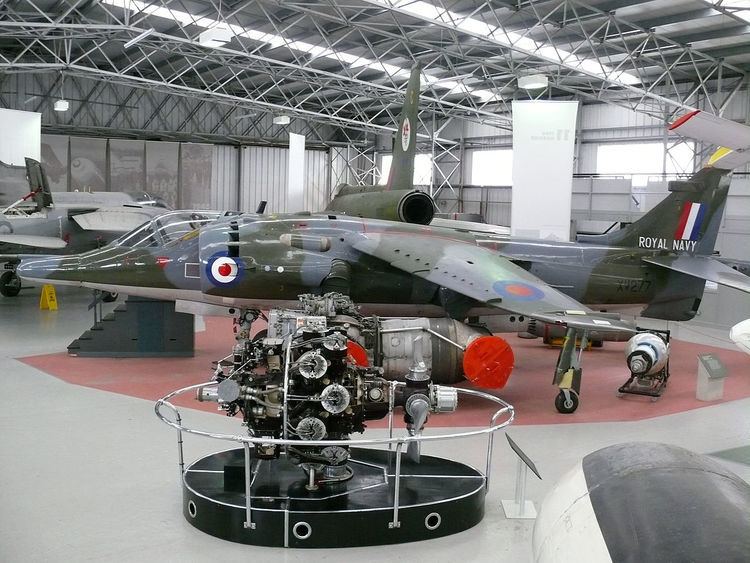Nationality British Children 2 sons | Institution memberships RAeS Name John Fozard | |
 | ||
Spouse(s) Mary Ward, Gloria Roberts Parent(s) John Fozard and Eleanor Paulkitt Significant awards Institution of Mechanical Engineers, Mullard Award | ||
Engineering discipline Aeronautics | ||
Prof John William Fozard OBE FRS FREng FRAeS FAIAA DSc(Hon) DCAe(Cranfield) BSc(Eng)(Lond) (16 January 1928 – 17 July 1996) was a British aeronautical engineer who helped to design the Hawker Siddeley Harrier.
Contents
Early life
Fozard was the son of John Fozard and Eleanor Paulkitt. He was brought up on the Firthcliffe Estate at Littletown, Liversedge, Kirklees, west of Heckmondwike, having earlier lived on Holme Street in Millbridge.
He was educated at Heckmondwike Grammar School in the West Riding of Yorkshire. He gained a BSc(Eng) from Hull Municipal Technical College in 1948 (an external degree awarded by the University of London). From the College of Aeronautics, Cranfield he gained a DCAe (Diploma in Aeronautics) in 1950, under Prof Sir Robert Lickley (who designed the Fairey Delta 2).
Fozard would later tell American visitors at the Hawker plant on Lower Ham Road next to the River Thames at Kingston upon Thames that Yorkshire was the Texas of the UK.
Career
Fozard joined Blackburn Aircraft in Brough in 1943 as an engineering apprentice.
He worked for Hawker Siddeley from 1950, working under Sydney Camm. In the late 1950s he was working on the supersonic successor to the company's Hawker Hunter, the P.1121, and the twin-seat P.1129. Although advanced designs for their time, these projects were cancelled by the infamous 1957 Defence White Paper, and Hawker concentrated all work on the (previously unimportant) P.1127.
From October 1963 he was Chief Designer of the P.1154, which was cancelled in February 1965 (with the BAC TSR-2). He was Chief Designer of the Harrier from 1965 to 1978, taking over from Ralph Hooper. The Harrier entered service with the RAF (at RAF Wittering) in August 1969. The first Sea Harrier (XZ451 – FRS.1) was handed to the Royal Navy's Fleet Air Arm on 18 June 1979, at a ceremony at BAe Dunsfold (the site had been owned by Hawker Siddeley from 1950), later to be based at RNAS Yeovilton. This version of the Harrier had been given the definitive go-ahead (funding) on 15 May 1975 by Roy Mason, the Barnsley-born Defence Secretary, after being met with government indifference previously.
The Pegasus engine, which was integral to the aircraft design, was designed by Gordon Lewis and Sir Stanley Hooker.
From 1984–7 he was Divisional Director of Special Projects at the Military Aircraft Division of British Aerospace, Weybridge. In February 1989 he retired from BAe. He later became the Director of the National Air and Space Museum, and held the Charles A. Lindbergh Chair in Aerospace History, from 1988–9.
From 1986–7 he was the President of the Royal Aeronautical Society. He became FRAeS in 1963.
Personal life
He married Mary Ward in 1951. They divorced in 1985. They had two sons. He later married Gloria Roberts in 1985, and they lived in Alexandria, Virginia.
He was awarded the OBE in 1981. He died from liver failure, aged 68.
Other relations:
.Joan Buchan née Fozard – Sister
.Cameron Buchan – Nephew
.Janet Leighton née Dransfield – Niece
.Garry Dransfield – Nephew
